This resource is hosted by the Nelson Mandela Foundation, but was compiled and authored by Padraig O’Malley. It is the product of almost two decades of research and includes analyses, chronologies, historical documents, and interviews from the apartheid and post-apartheid eras.
Overview of 1990
Looking at the early 1990s each year outdoes the previous in terms of significance as SA marched, sometimes haltingly, sometimes hesitantly, sometimes stridently and mostly violently towards the enfranchisement of all, free and fair elections, and the adoption of a democratic constitution, a Bill of Rights and a Constitutional court.
On 2 February President FW de Klerk unbanned the ANC, SACP and all illegal organizations and nine days later Nelson Mandela walked out of Victor Verster Prison, outside Cape Town, a free man after 27 years of incarceration. He is 72 years of age. His first address to South Africa and the world was hard. He was a loyal and disciplined member of the ANC. He hinted of the future nationalisation of industry. At the time 80 per cent of the capitalization of the Johannesburg Stock Exchange is in the hands of four companies.
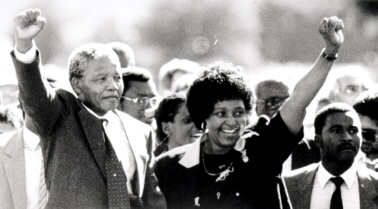
Mandela's seemingly hard line speech did nothing to reassure an apprehensive white community, but it was not intended to. Mandela was speaking to the vast constituency of the Black masses, to the ANC leadership in Lusaka and abroad, to leaders of the Alliance the SACP & COSATU and top ANC leaders throughout the world, all of whom at one point or another had fed rumours that Mandela had "gone soft," had been talking with the government while he was in prison and was prepared to cut some kind of deal that would fall well short of the ANC's avowed objectives. He called for intensified mass action and for the government to create an atmosphere conducive to a peaceful negotiated settlement, obviating the need for a continuation of the armed struggle. And he called De Klerk a 'man of integrity,' words, Mandela says "that came back to haunt me."
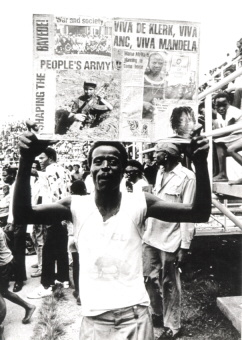
However, the unbanning of all political parties and the release of Mandela threw the ANC off balance. Paradoxically, it was taken by surprise by the sheer audacity of de Klerk's actions, despite signals since the late 1980s that Mandela's release was only a matter of time. In late 1988, Mac Maharaj, a member of the NEC who headed the ultra secret Vula Operation from within SA, suggested to Oliver Tambo that the ANC should create a Reception Committee, which it did.
Mostly the ANC tacked its sails to the wind. It simultaneously tried to juggle multiple tasks: to establish a presence in SA with a HQ, find competent staffing, create structures & departments, & a media apparatus, organize at regional & local levels, assert its pre-eminence among the other parties claiming to be the real party of the masses, while the government for political mischief also queried its claim for pre- eminence, hypocritically asserting that all parties, regardless of pedigree should be treated as equal, now that everyone was inhaling great gusts of democracy & openness, and respond to the government's calls for talks. Chaos ruled, but understandably so. Calls from the regions to HQ on Sauer St. often took an hour to get through; and then you had to get connected with the person you were calling.
The Pan Africanist Congress (PAC) underwent a similar disorientation, although it was apparent that it had nothing like the organizational, financial resources or the personnel to match the ANC's, which was able to immediately draw on the UDF and COSATU for assistance and direction & perhaps, most importantly, organizational structures already in place.
Contradictions and rumors had a field day. The ANC wanted the government to respond to its overtures for talks but not too quickly; it couldn't be seen as suing for peace. On the other hand, it couldn't be seen as the party holding back. It had to prepare its constituency, which for years it had urged to armed actions to overthrow the apartheid regime to hold its breath and give negotiations a chance. Township youth and the 'comrades,' given to believe that a seizure of power was at hand, had to be hauled into line. The ANC demanded immediate actions from the government regarding the release of political prisoners & granting indemnity to exile, aware that De Klerk had not yet consolidated support even within the NP for his actions and could face replacement or a military coup.
On Mandela's release, Buthelezi, tried to grasp the initiative and establish that both he and Mandela were equals, and thus that the ANC could make no superior claim to speak for the masses. He immediately called for a meeting between himself & Mandela to find ways to end the violence between Inkatha & the UDF. The arrangements for the meeting were mismanaged on both sides & Mandela backed out of the meeting on the insistence of ANC structures in Natal, but most notably at the insistence of Harry Gwala, the hard line leader of both the ANC & SACP in the Natal Midlands, the fiercely contested combat terrain in the Inkatha/ ANC war in KwaZulu Natal (KZN.) Mandela's explanation that he could not meet with Buthelezi because if he did so "he would be throttled by members of the ANC" was pounced on by both the NP, Inkatha & the ANC's internal opposition as an indication that "Mandela was "not his own man," just a puppet being manipulated by certain elements in the ANC -- codes words for communists.
Fear of communism was, and would remain, pervasive among whites, despite the fall of the Berlin Wall, and the subsequent collapse of communism in Eastern Europe and the Soviet Union. They made no distinction between the ANC & the SACP.
However, Mandela did go to Durban weeks after his release to try and mend the rift between Inkatha and the ANC. He told 100,000 people at a rally at Kingsmead stadium in Durban "to throw their pangas into the sea," & called for an end to violence in KZN. The 'young lions' howled their disapproval, for Mandela a sharp fast forward in time, the youth of the 1990s did not bow to the admonitions of even their most respected elders as the youth of the 1950s once had.
From the beginning the ANC distrusted the government's intentions: that it would dismantle apartheid, yes, negotiate a genuine a democratic dispensation, no. It accused the regime of pursuing a dual strategy: negotiate with the ANC on the one hand; undermine it with violence on the other to prevent it from organizing at the grassroots & by creating doubts among its constituency about the ANC's ability to protect their lives. Hence, it argued that the security force sanctioned and directed violence by Inkatha in the Vaal, between Inkatha-supporting hostel-dwellers and ANC-supporting township residents. For its part the government accused the ANC of pursuing its own dual strategy: organizing on the legal level as political party; organizing underground for a mass insurrection.
This deep distrust between the government & the ANC created a political atmosphere that poisoned the political terrain within nine months. With the explosion of "Black on Black" violence in the Vaal in September, SA began a harrowing course. Ironically, other than the ANC putting the blame on the regime the political parties unbanned with the ANC, most notably the PAC & AZAPO, the ANC's rivals & Inkatha all blamed the ANC. You only had to examine the ANC's actions in the past, they asserted, to see that it had a history of being intolerant of political opposition.
Moreover, the veneer of apartheid's demise began to crack within months of Mandela's release. In February, the existence of a covert body the Civil Co-operation Bureau (CCB), within the South African Defence Force (SADF) came to light. The CCB was accused of carrying out political assassinations of government opponents.1 In late March, police opened fire on ANC supporters in Sebokeng, a township about 30 miles outside Johannesburg, killing 12 and injuring hundreds. The NEC suspended upcoming talks with the government. De Klerk appointed Judge Richard Goldstone to lead a commission of enquiry into these deaths & others. The Goldstone Commission would continue its investigations through elections in 1994, the watchdog probing assassinations, massacres and incidents of violence. Its findings often led to the conclusion that the state's security machinery was often the instigator of violence, and often the perpetrator.
In May the government & the ANC met for the first time at Groote Schuur, the residence of the Cape former colonial rulers, including Cecil Rhodes, on the outskirts of Cape Town. Old enemies shook hands for the first time. As a result the two parties signed the Groote Schuur Minute. The ANC agreed to review its policy on the armed struggle; a joint working committee was established to work out the definition of "political offences", review procedures for "the release of political prisoners and granting indemnity"; and the government agreed to the lifting of the State of Emergency and enabling exiles to return to the country.
Commenting on the historic significance of the Groote Schuur meeting in "Soul of a Nation," the best documentation of the constitutionmaking process the political parties engaged in, Hassen Ebrahim writes, "Within three days a remarkable rapport had been established between parties in an experience described as 'cathartic'. Both sides realized that they had to rethink some of their basic assumptions."2 In late May the first indemnifications are granted.
Dr Andries Treurnicht, leader of the Conservative Party (CP) warned that if power was handed over to the ANC the 'third freedom struggle would begin'.
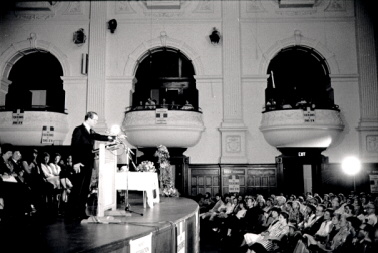
Eugene Terre'Blanche, leader of the right wing AWB, also warned: The Boers would fight rather than accept Black majority rule. In June the government lifted the State of Emergency except in KZN. The upsurge in political violence proceeded aside with political developments. By June the death toll had reached 1600 for the year.
On 2 July the ANC, COSATU and the UDF called a national stayaway to protest against the violence in Natal and as an attempt to isolate Inkatha, but the stayaway was opposed by some organisations including AZAPO, National Council of Trade Unions (NACTU) and the PAC. Nevertheless, three million workers supported the one day strike, but with little success on 22 July in Sebokeng a further 24 people were killed in clashes between IFP and ANC supporters.
On 14 July Buthelezi launched Inkata as a political party - Inkata Freedom Party (IFP).
Operation Vula (a covert ANC operation known only to ANC President Oliver Tambo & Joe Slovo, and later when Tambo had his stroke in August 1990 to Alfred Nzo); was uncovered by the security forces in July. The NEC resolution in 1986 authorizing projects such as Operation Vula called for members of the ANC leadership, including members of the NEC, to be infiltrated into South Africa to take control of the struggle, establish an underground and create an army in preparation for a people's war. Mac Maharaj, a member of the NEC and the operation's commander, and Siphiwe Nyanda, an MK Commander, entered South Africa clandestinely in August 1988, establishing a sophisticated communications network that linked Maharaj with Tambo and Slovo, and ultimately Mandela with Tambo. In March 1990, Ronnie Kasrils, also a member of the NEC, joined Vula.
When Vula was uncovered the government described it as a "Red plot" to overthrow the government by force and demanded that Mandela drop Joe Slovo from a second meeting between the government & the ANC, scheduled to take place in Pretoria. Mandela refused & De Klerk backed down when the "Joe" mentioned in some of the Vula communications turned out to be Nyanda and not Joe Slovo.
The ANC's tardiness in acknowledging that Vula was an ANC operation created the impression of division in the ranks of the leadership, of hardcore militants and the constitutionalists vying with each other for control of the struggle's soul. Indeed, the unending media speculation questioning of the real agendas of both ANC & government, often on the basis of each side spreading disinformation about the other, contributed to uncertainty and confusion. The Alliance grappled with multitudinous demands & steered a way across the minefields waiting for the unthinking step.
In July 1990 the South African Communist Party (SACP), under the leadership of Joe Slovo, was relaunched as a legal party at a rally in Soweto attended by some 60,000 people.
The government repealed the Acts that were the foundation of apartheid the Group Areas, the Reservation of Separate Amenities Act and the Population Registration Act. De Klerk snatched his moment in the international political limelight. He attended Independence ceremonies for Namibia in March and met with nine African heads of states in Windhoek -- a first for a South African president. In May he visited nine European countries - travel abroad & the hoopla that accompanied it provided him with a false sense of legitimacy. He began to believe that he could perhaps reform the state, not dismantle it.
On 6th August the ANC & the government met again in Pretoria. In the Pretoria Minute the ANC agreed to a unilateral suspension of the armed struggle, "in the interests of moving as speedily as possible towards a negotiated political settlement." The NP agreed to start releasing political prisoners on 1st September & both sides agreed that "the way is open to proceed towards negotiations on a new constitution." However, outcomes soon outran promises & the release of political prisoners took torturous twists and turns before being finally completed in September 1992.
Inkatha, fearful that the government and the ANC might become bedfellows signalled to the government that it, too, was ready to enter into bilateral talks. Parties began to line up to claim their seats at the negotiating table.
Following the Pretoria Minute there was a frightening increase in violence seemingly random train violence, taxi violence and township violence. The total number of people killed during 1990 spiralled to 3,700 -- an increase of over 2,000 deaths on the total for 1989. At least half occurred in KZN. There were rumours of police giving weapons to 'vigilante' groups. Each side accused the other. The conflict had spread to the Reef between the Zulu, Inkatha-supporting dwellers of the hostels and Xhosa residents of the adjacent townships.

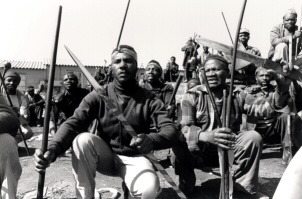
Perhaps 10,000 Africans were killed between 1990 and 1994 -- Africans killed by Africans, mostly in KZN, albeit in many cases the regime's security personnel lent an indirect or a direct hand. Inkatha accused the ANC of trying to wipe it out. The ANC accused the security forces of working hand in glove with Inkatha & denounced Buthelezi as a puppet of the regime. In rural areas African comrades killed African comrades. In the Vaal Triangle, hostel workers & township residents engaged in a running battle.
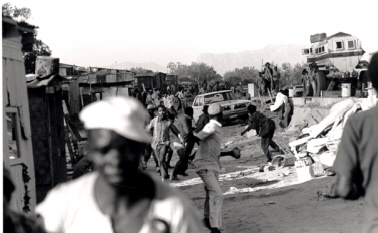
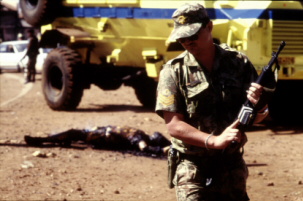
Both sides exercised their respective bogey men: The ANC excoriated the security forces' third force, the government continued to see communism playing some sinister & devious role as it tried to destabilize the state.
Inkatha, fearful that the government and the ANC might become bedfellows signalled to the government that it, too, was ready to enter into bilateral talks. Parties began to line up to claim their seats at the negotiating table.
In December the ANC held a National Consultative Conference in Johannesburg at which Mandela was formally elected to the position of the Deputy President. The Conference endorsed a hard line.